Where to See Bison in Badlands National Park
In southwestern South Dakota, a huge collection of multicolored rock formations sits within sprawling prairie, providing a home to one of America’s largest federal bison herds.
Although its name implies otherwise, “there is nothing bad about Badlands National Park,” the National Park Service says.
“In fact, it should be called ‘goodlands.’ For it is a landscape of full unique triangular buttes, orange and tan geological spires, expansive stretches of mixed grass prairie, and a herd of over 1,000 roaming bison.”
In addition to enjoying breathtaking Badlands sunrises and sunsets, and exploring a trail or two, visitors usually also want to see some of the park’s iconic wildlife—seeing bison in Badlands National Park is often a priority.
So, if you’re planning to visit the park and would like to know where you can see bison in the Badlands, I’ve outlined the best areas for you below. Plus some important bison safety tips, too!
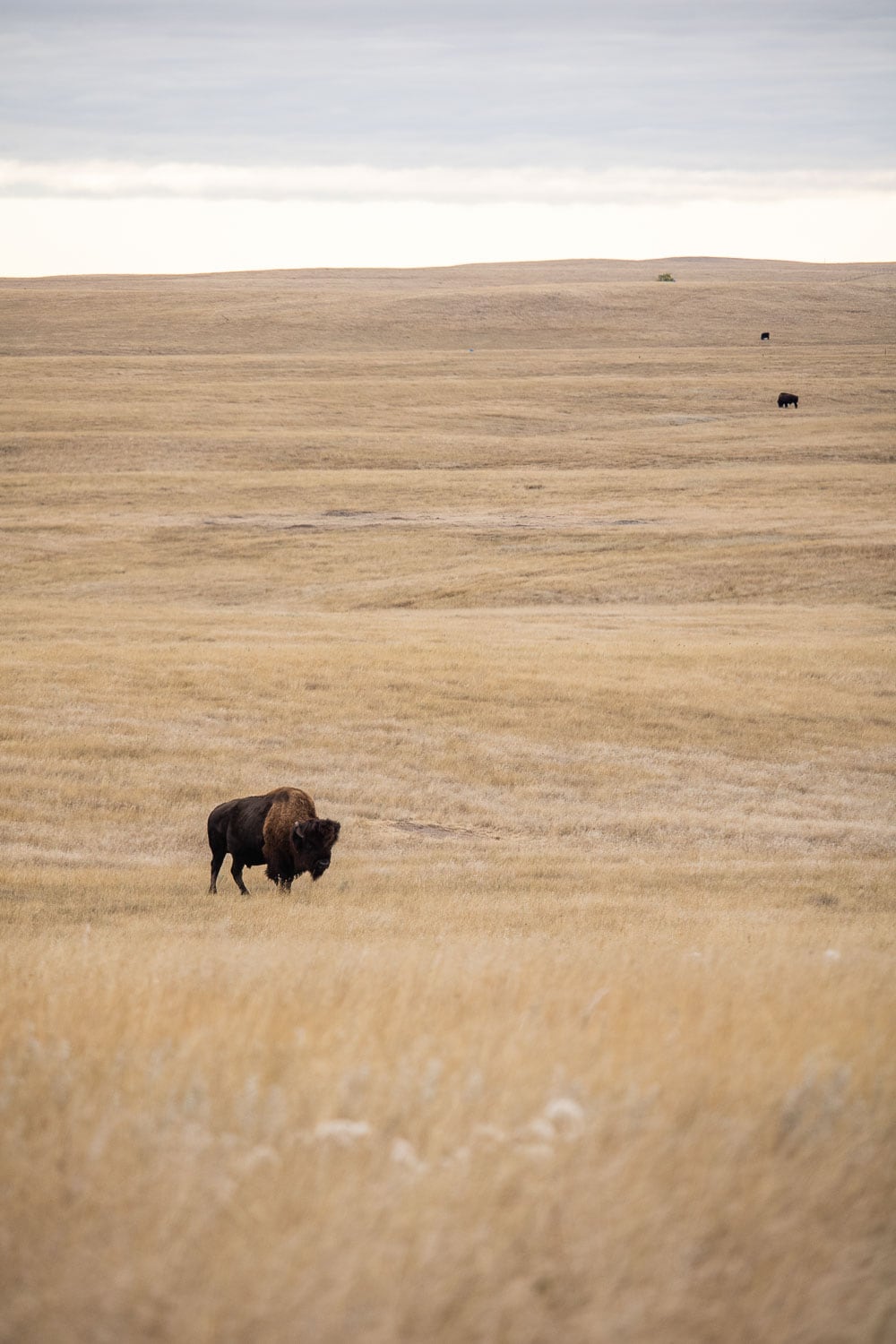
This blog post about the best places to see bison in Badlands National Park contains affiliate links. You can read more about our Terms of Use / Disclosure here.
Bison, Buffalo or Tatanka?
Even though the scientific name of these animals has bison in it twice (Bison bison), many people refer to them as “buffalo.” Their official name is “American bison.”
Although technically incorrect, both buffalo and bison are often used interchangeably in the United States.
The word buffalo comes from the French “bœuf” and originated among French fur trappers who came across the animals in the early-1600s. True buffalo are found only in Africa and Asia and were known to the French at the time they first encountered American bison.
So, while the American name buffalo is actually a mix-up between two different animals from different continents, the word is still in use to describe American bison today.
In this article, as well as in all other references to these animals elsewhere, I use the scientifically correct name of “(American) bison.”
Additionally, “tatanka” is another name for American bison. This is what the Lakota call these animals, which are of exceptional importance in their culture.
As a nomadic people, the Lakota were dependent on bison for essentially everything, from food and clothing to tools and fuel, and they’d follow the bison herds constantly. The Lakota might also refer to bison as “pte.” (The Tribe is sometimes known as “pte oyate,” which means “buffalo nation.”)
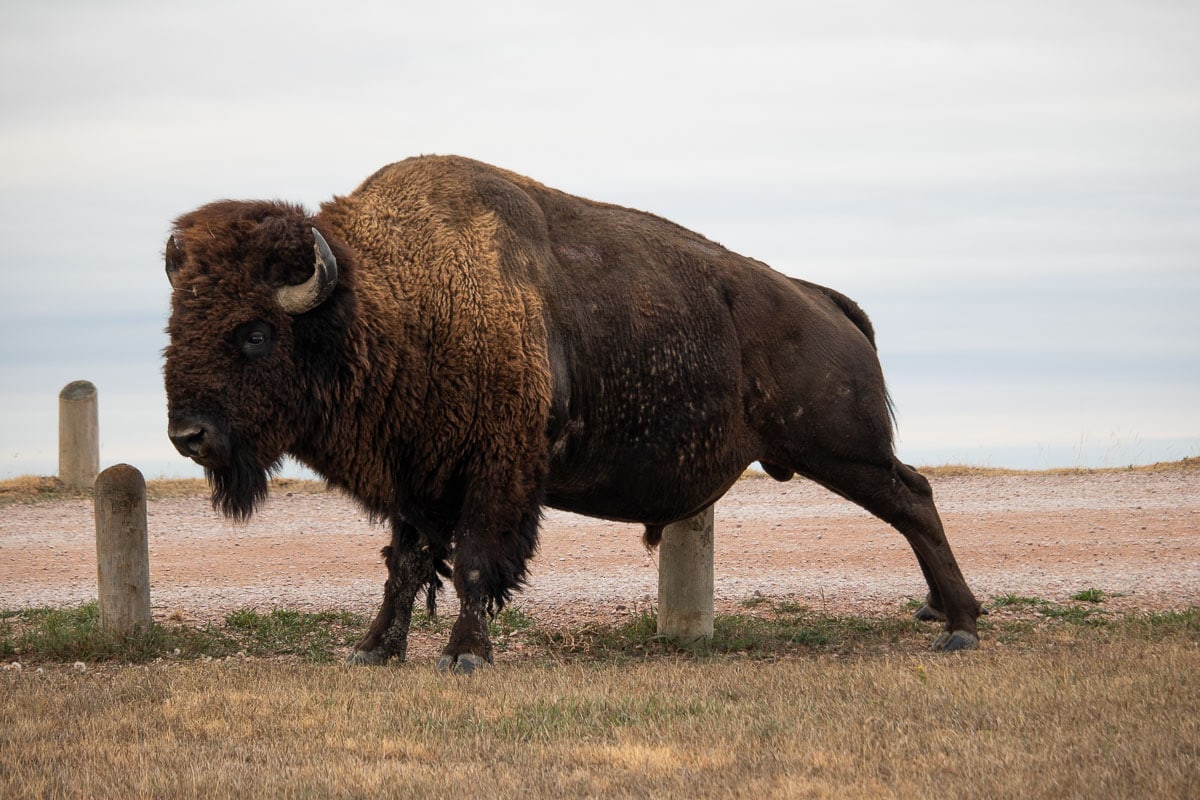
Bison in Badlands National Park
Millions of American bison used to roam the sprawling American prairie before getting perilously close to extinction in the late-19th century.
Although they’re now once again present in the Badlands, they did have to be reintroduced here from nearby Theodore Roosevelt National Park in 1963. That original reintroduced bison herd consisted of 50 individual animals.
Luckily, Badlands National Park’s sprawling mixed-grass prairie, along with sustainable management practices, has helped the bison population to recover.
The park is in the heart of the bison’s historic range, an ideal environment for them to continue thriving (albeit under careful management). Nowadays, Badlands is one of only a handful of national parks where you can see bison in their native habitat.
The Badlands National Park bison herd consists of approximately 1,200 animals and is one of the nation’s largest federally managed bison herds.
3 Best Places to See Bison in Badlands National Park
Home to more than 1,000 bison, Badlands National Park offers some of the best bison viewing opportunities in the United States. Below, you’ll find the best places to see bison in Badlands National Park, South Dakota.
1. Pinnacles Entrance Station
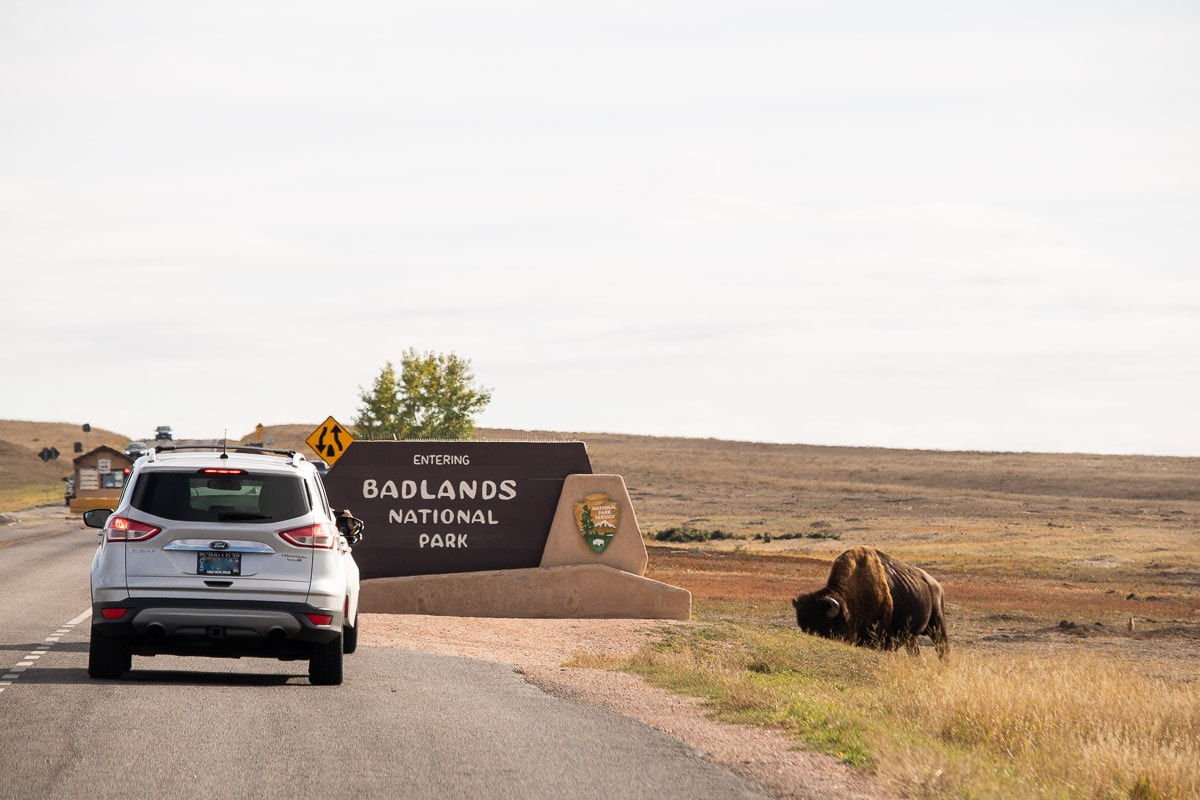
One of three entrance stations in the park, the Pinnacles Entrance Station is about 8 miles south of Wall and exit 110 on I-90.
It is the nearest Badlands National Park entrance from Wall, offering access to the Badlands Loop Road (to the east) and Sage Creek Rim Road (to the west).
The Pinnacles Entrance Station sits within a natural mixed-grass prairie landscape, which is home to all kinds of wildlife.
Bison often graze near the entrance, making this one of the easiest places to see bison in Badlands National Park. Additionally, I’ve also seen several other animals here, including prairie dogs, pronghorn, a coyote, and a badger.
2. Deer Haven Game Trails
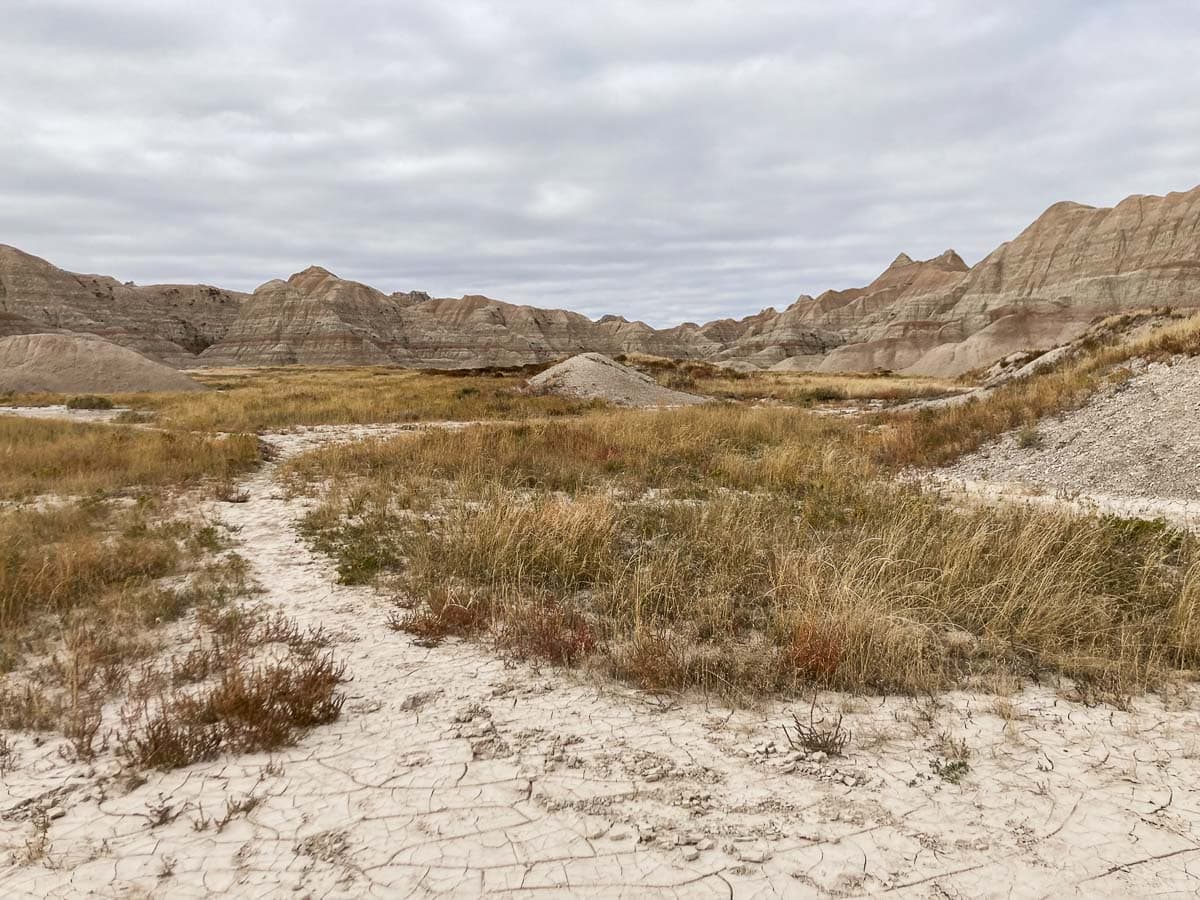
The Deer Haven Trail is an unofficial and unmaintained network of game trails in the heart of the park’s North Unit.
It starts at the far end of the Conata Picnic Area, which is just down Conata Road from the Yellow Mounds Overlook. Make sure to fill out the backcountry registration form before starting your hike.
Deer Haven, after which the trail is named, is about 3 miles from the trailhead, a small stand of juniper trees where wildlife is often spotted.
You can continue following the game trails deeper into the wilderness or retrace your steps to the trailhead at the picnic area, making this a 6-mile roundtrip backcountry hike.
Although it’s a popular hiking area, you should prepare properly for this hike. There are no designated or marked trails, so you’ll need to bring a detailed map and compass. Also pack plenty of water and snacks. Watch for rattlesnakes on the way.
As its name suggests, Deer Haven is frequented by mule deer, who relish the area’s grasslands and juniper trees. Bison are also common sights here.
3. Sage Creek Rim Road
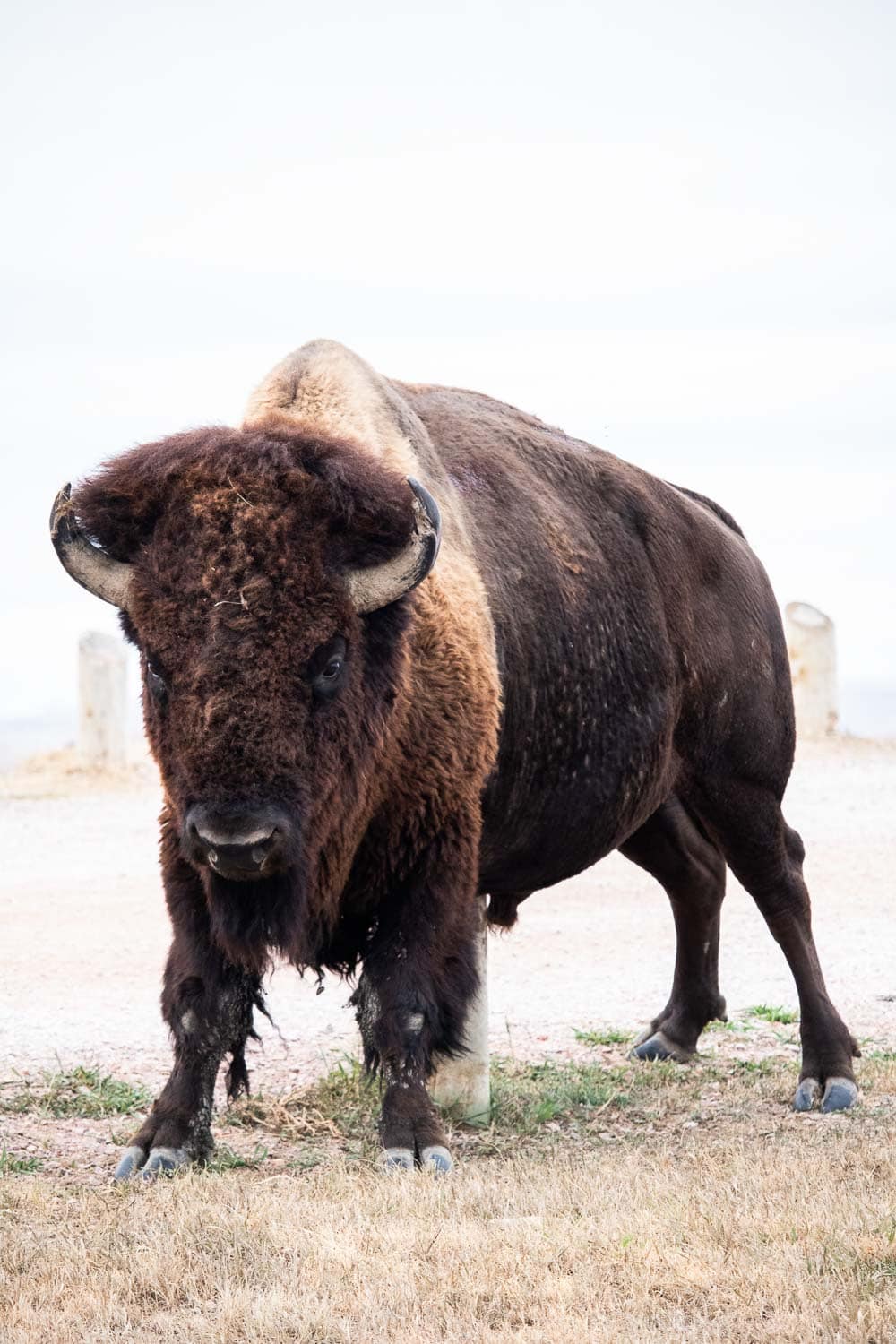
The Sage Creek Rim Road is a 12-mile gravel road that winds through the northwest portion of Badlands National Park’s North Unit. It starts off of the Badlands Loop Road just south of the Pinnacles Entrance.
While many visitors skip this scenic drive due to a lack of time, this is definitely a part of the park that deserves to be explored.
The dirt road offers great views of the vast Sage Creek Wilderness Area, a landscape of rolling grass-covered hills, dotted with small badlands and wooded areas.
The primitive Sage Creek Campground has 22 campsites and makes for a nice basecamp to explore the wilderness—sometimes you’ll literally wake up with bison grazing next to your tent.
There are a few scenic viewpoints along this road, namely the Hay Butte, Badlands Wilderness, and Sage Creek Basin overlooks. Roberts Prairie Dog Town is another popular attraction.
I highly recommend driving the entire length of the Sage Creek Rim Road—there are excellent views from start to end. However, if you’d like to stretch your legs, you can go for a little hike here as well.
I particularly like the 0.6-mile section between the Hay Butte and Badlands Wilderness overlooks. (Leashed dogs are allowed on gravel roads in the park!)
And in addition to prairie dogs, Sage Creek Rim Road is arguably the best place in Badlands National Park to see bison. I also saw a coyote and a herd of pronghorn here.
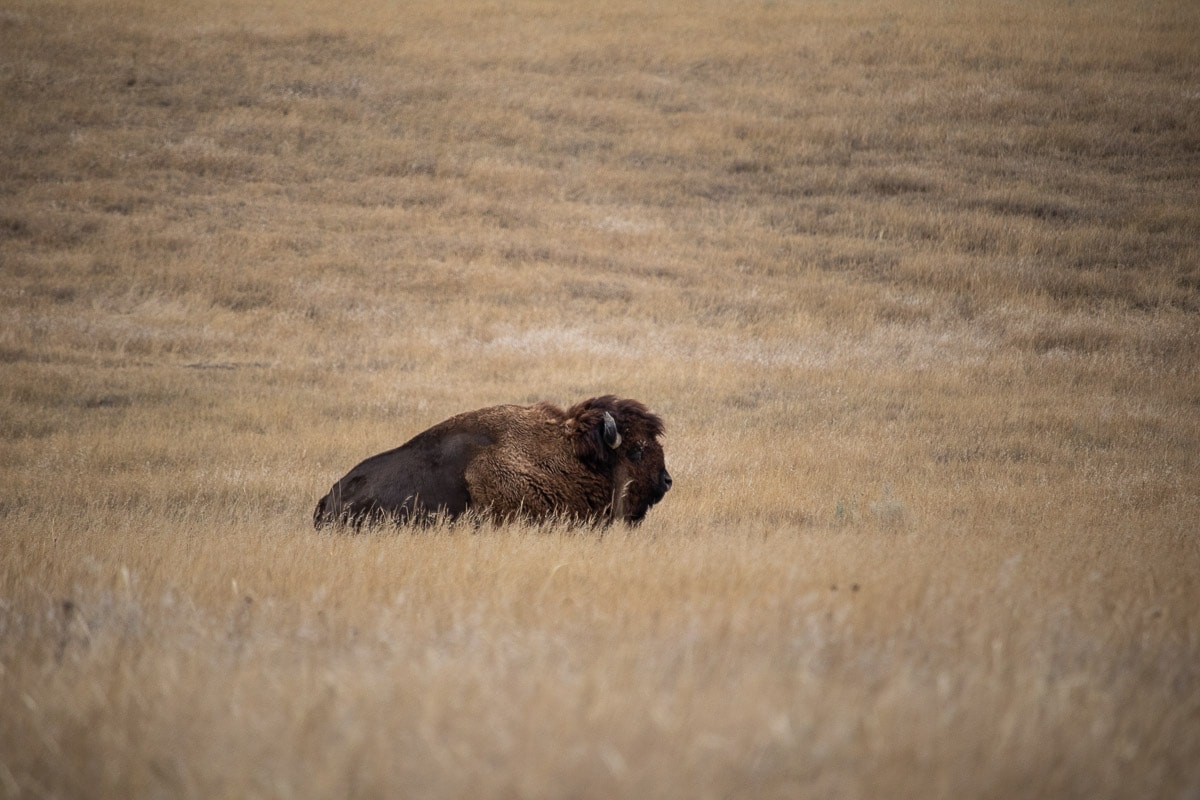
Badlands National Park Bison Roundup
While the Badlands National Park bison herd roams freely for most of the year, there is a brief period when significantly fewer bison are around. This is during the annual bison roundup in the fall.
The National Park Service explains that “during the roundup, rangers collect as many bison from our herd as they can in our corrals. Once in the corrals, rangers collect biological data from each bison and tag recently born bison. Sick and injured bison also receive treatment at this time.”
“After all the information has been collected, we divide the bison the park will keep from the ones it will not. The bison that the park does not keep will go to live on other public lands or will be given to groups like the Intertribal Buffalo Council, which is a coalition of Native American tribes dedicated to preserving traditional buffalo practices.”
For this reason, if you’d like to see large numbers of bison in Badlands, I recommend visiting another time of year. (One of my visits to Badlands National Park was in early-October, which was exactly when most of the bison were in the huge corrals near the Pinnacles Entrance.)
Map of the Best Places to See Bison in Badlands National Park
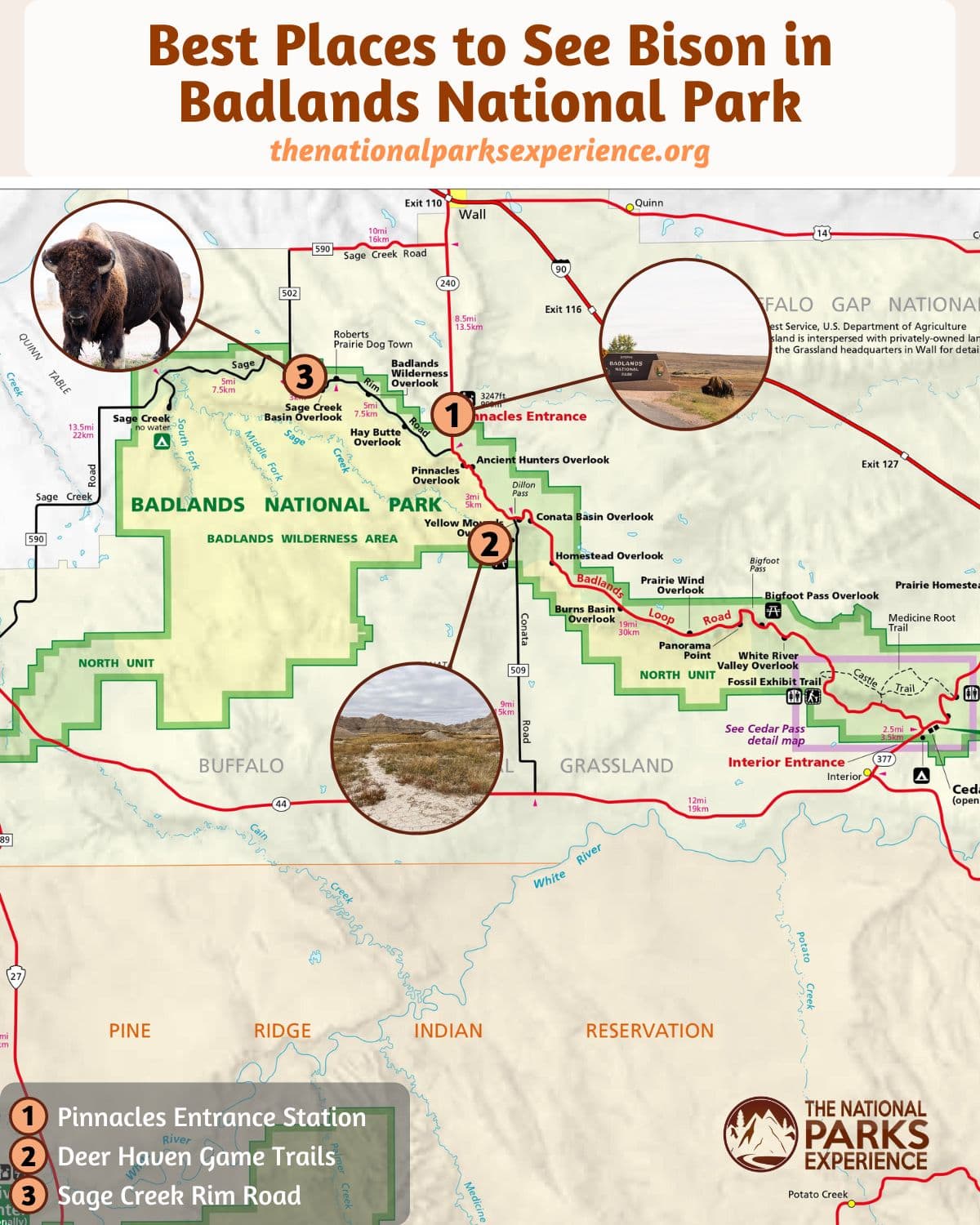
Bison Safety in Badlands National Park
They may appear aloof and seem relaxed, but the bison in Badlands National Park are very much wild animals. Even if they look calm, they can be grumpy and easily triggered.
Bison are huge and powerful animals, can be unpredictable, and are able to run three times as fast as a human. When agitated, they can inflict severe injuries and might even go as far as to kill something they perceive as a threat.
Therefore, the park advises visitors to stay at least 100 feet from bison, as well as all other wildlife, and to not provoke the animals.
Always be vigilant when hiking or observing bison in Badlands National Park.
For more tips and information, I recommend reading this bison safety blog post.
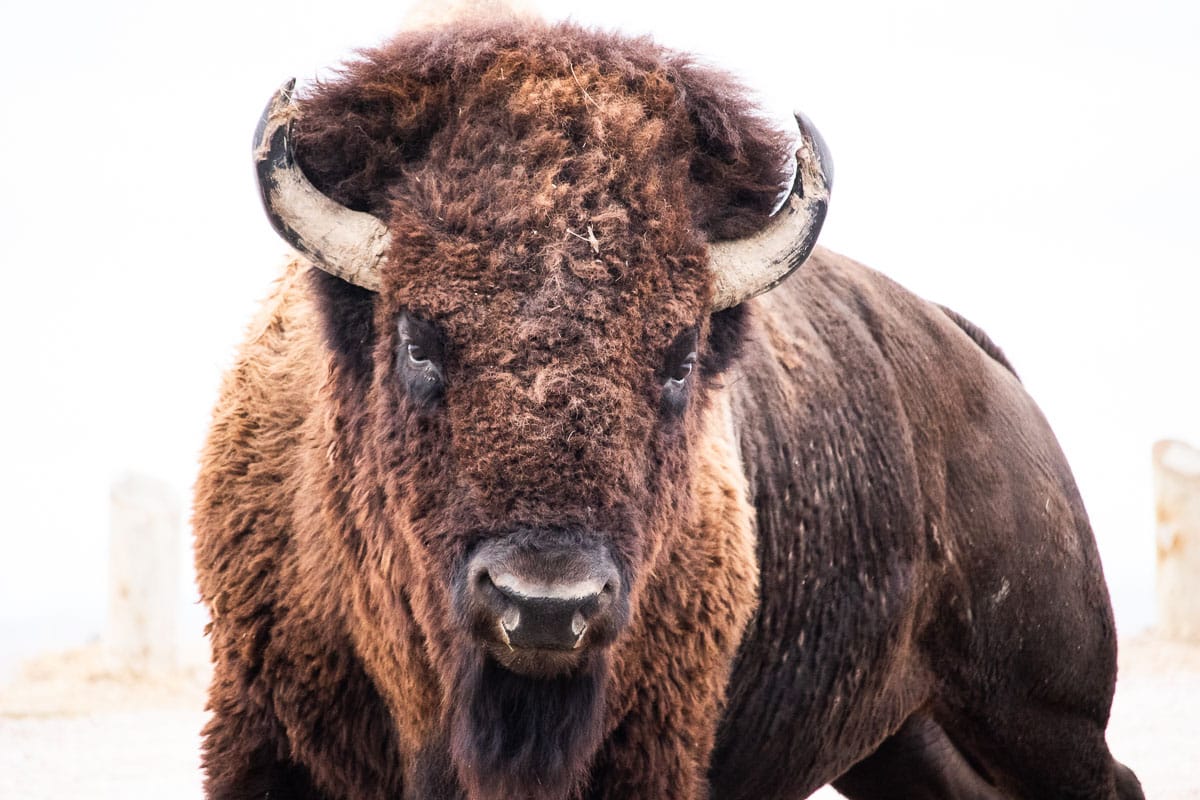
More About Badlands National Park
- Park Website
- Travel Guide
- Topographic Map
- Best Badlands Hikes
- Top Things to Do in Badlands National Park
- Where to See Wildlife in Badlands National Park
- Best Badlands Views
- Accommodation






